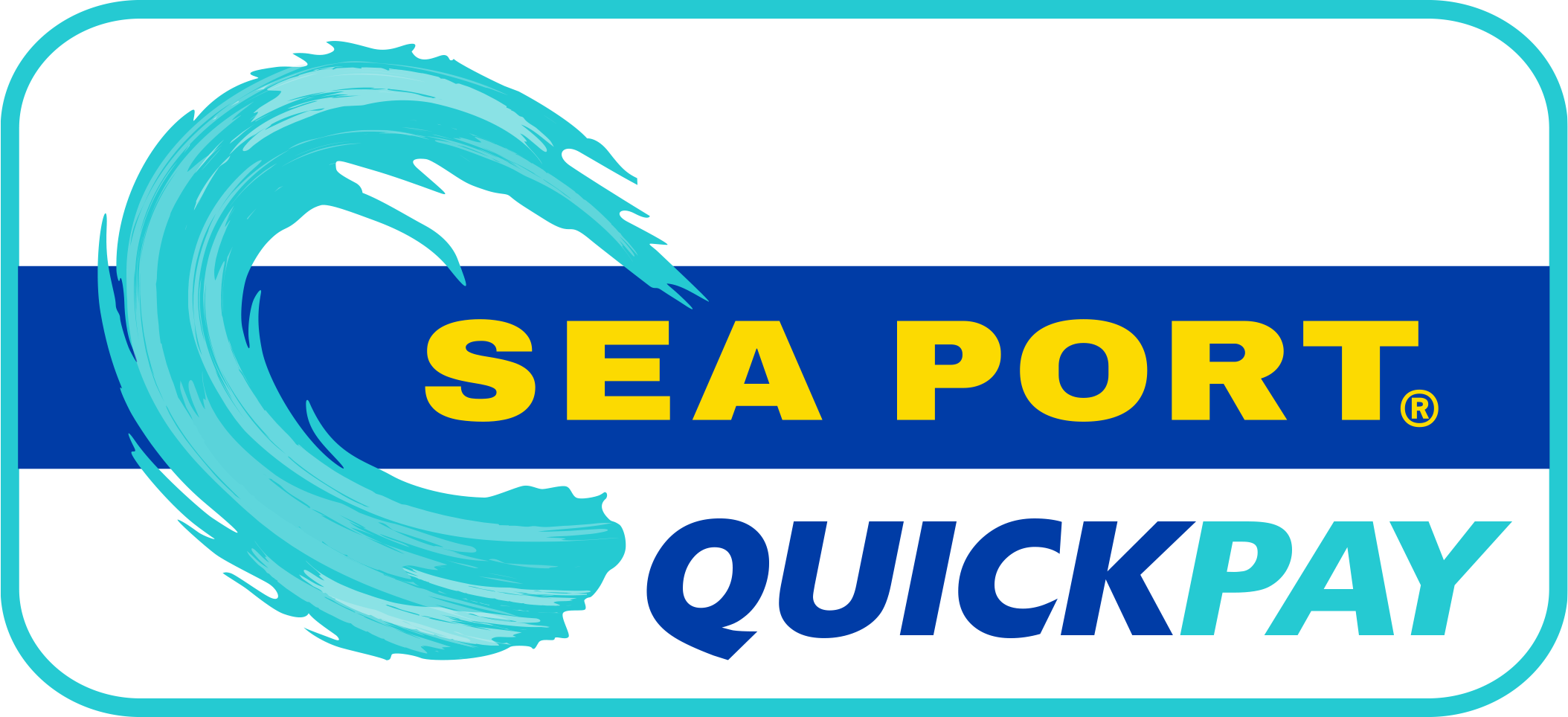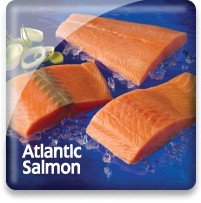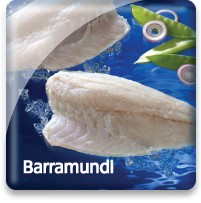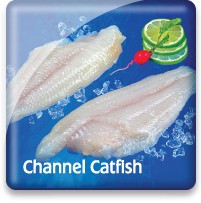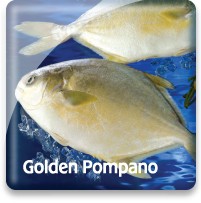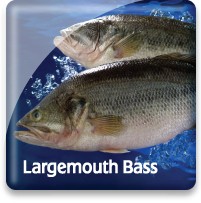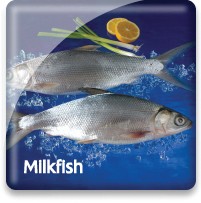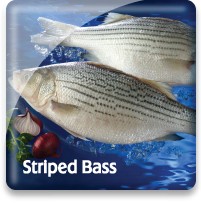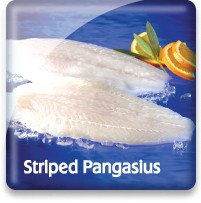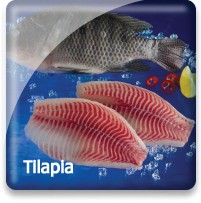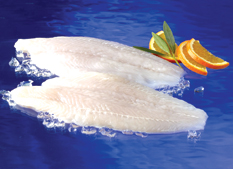
Striped Pangasius

Market Name: Eating QualitiesStriped Pangasius is a rather versatile fish, adaptable to any number of cooking methods. The very white fillets have a rather delicate texture and light taste, and easily take on flavors that are introduced during cooking. Fresh and sweet, basa retains moisture well. While frying is most popular, basa can be baked, broiled, grilled, poached, sautéed, or even pan-fried.
90% of pangasius farming occurs in Vietnam.
|
Description & CharacteristicsStriped Pangasius are farm raised, primarily in the Mekong Basin of southern Vietnam. Striped Pangasius is a scale-less, freshwater fish that like Tilapia, has gained a lot of commercial popularity in the US within the last 10 years. Originally imported and marketed as Basa or Catfish, the fish now is only accepted by FDA to be marketed and sold as Striped Pangasius, Swai or Tra. The changes and variety in acceptable market names have caused some confusion - the safest way to know what you are buying is to refer to the scientific name: Pangasius hypophthalmus. Because of its fast growth rate (6-9 months) there is steady supply, and availability is year-round. Striped Pangasius is a white fish, with mild flavor and a firm texture - allowing for versatile cooking applications. Our brand Sea Port Panga® comes in a bright colorful case, available in both bulk and IVP (ready for retail) packaging. Although commonly called “swai, tra, and striped pangasius” among a few other names, this fish are farmed scaleless, freshwater fish predominately from Vietnam. Pangasius, has had a rather successful story in the U.S. in the past couple of years, and continues to gain consumer preference according to many in the industry; some even consider this specie to be the “tilapia” of the future. Although there has been a wild fishery; Striped Pangasius and swai are primarily farmed in the Mekong River delta in Vietnam, both in ponds and cages that are placed in the open water. Most are small scale or family farms. Fingerlings and fry from commercial hatcheries are placed in ponds or cages for a growout of about eight months. Fish are harvested at about two to three pounds. This fish is consumed locally and all over Southeast Asia. Fish are shipped live to centrally located processing facilities where they are mostly filleted. Fillets yield an average of about 30–40 percent. Both basa (Bocourti) and swai are hearty fish. Basa is preferred locally and is considered the better fish with a thicker fillet and whiter meat. Swai has a higher survival rate and better feed conversion. Pangasius is typically a higher-priced fish than swai. Today most imports into the U.S. are reported to be swai. The European Union and Australia are also important markets for these fish.Imports of Striped Pangasius and swai have increased continuously over the past several years despite the tariff imposed to imports of this specie that resulted from the anti-dumping petition filed by U.S. catfish farmers to the U.S. Department of Commerce in 2002. Thereafter, the successful lobbying efforts of domestic farmers to include farmed catfish into the Farm Bill of 2008, states that the United States Department of Agriculture’ Food and Safety and Inspection Service will be in charge of inspecting domestic and imported catfish, and for defining which species are to be considered to be “catfish”.
Other ResourcesPanga Myths Flyer |
Handling Instructions for Striped Pangasius
Frozen striped pangasius (also called Tra, swai, and sutchi) fillets should be stored at or below 0°F (-18°C) and then thawed properly when ready to cook. The frozen shelf life is 18 months. Links to proper seafood handling instructions: NOAA - Fish Watch: Handling Seafood and A Consumer Guide to Safe Seafood Handling.
Thawing Striped Pangasius
Thawing is accomplished by placing the fillets in a sealed plastic container or bag and placing in the refrigerator (33 to 39°F) for 12-24 hours. This is our recommended thawing method for fillets. Fillets that are not consumed promptly after thawing need to be refrigerated between 33 and 39°F and totally consumed in 2-3 days.
Important Instructions for Striped Pangasius
Consuming the fillets immediately after proper thawing yields the best quality.
The Federal Food, Drug and Cosmetic Act now requires that all foods that are not raw agricultural commodities and that contain a major food allergen be labeled to clearly identify the name of the food source form which the allergen is derived. (21 CFR U.S.C. 343(w)(1)). The act defines eight foods, and any ingredients derived from these foods as major food allergens: Fish, Crustacean Shellfish, Milk, Eggs, Tree Nuts, Peanuts, Wheat & Soybeans. The name of the food source that must be listed on the label for fish or crustacean shellfish must be the specific type of fish or crustacean shellfish. The market names of species of fish and crustacean shellfish should be used to identify the food source of these two major food allergens. If you intend to re-pack these seafood products, be sure the allergen is declared in either one of two ways:
1) Within the list of ingredients
or
2) In a separate “Contains” statement immediately after or adjacent to the list of ingredients.
Consult the Fish and Fishery Products Hazards and Controls Guidance, Fourth Edition, Chapter 19 for more detailed information on the labeling of food allergens.
Cooking Tips
Striped pangasius fillets can be prepared using a wide variety of cooking techniques. Link to cooking tips and recipes.
Vietnam
With a coastline of 2,140 miles, as well as numerous rivers and lakes, Vietnam has had a long tradition of fishing and a culinary tradition that includes finfish, shellfish, and molluscan shellfish.
Bordering China in the far North, and Laos and Cambodia in the middle and Southern regions, the country—known officially as the Socialist Republic of Vietnam—is divided into 58 provinces, and includes several major sea ports.
With seafood production surpassing USD $6 billion in 2012, seafood—both cultured and wild—represents an important export for this developing country.
Major seafood exports from Vietnam include cultured and wild shrimp: Black Tiger prawns and Penaeus vannamei are grown in Southeast Vietnam, and small white and pink shrimp are still commercially caught in the South China Sea off the southern coast.
In addition, Vietnam is becoming known for its high-tech seafood processing industry, adding value to commercially harvested and farmed fish and seafood.
Species that are commercially caught include Grouper, Red Snapper, Red Mullet, Tuna, Swordfish, and Barramundi—which are the major species that are exported to Australia, the United States, and the EU. Vietnam is also a major producer of farmed Tilapia, and two species of Pangisius (boucourti and hypothalamus). Squid and octopus, as well as various species of lobster and crab and molluscan shellfish are also major export products as well as products consumed in-country.
http://cport.net/go-blue-seafood-sustainability-spectrum
Go Blue! Seafood Sustainability Spectrum*Click here for an explanation of our Sustainability Spectrum 
Sustainability AssessmentDue to fast fish growth, tolerance of high stocking densities, and relatively low use of marine resources in feed, Striped Pangasius farming is one of the most efficient food production systems in the world. However, in Vietnam (the source for Sea Port’s farmed Striped Pangasius), rapid expansion and intensification of Pangasius farming in the last decade, coupled with a general lack of best practices and regulation, have resulted in many negative environmental impacts. A principal environmental concern is localized water pollution from untreated farm waste. There are also concerns with the use of antibiotics and other chemicals, the use of “trash fish” and wild fish stocks in feed, fish disease, and the potential loss of genetic diversity due to inadequate broodstock management.
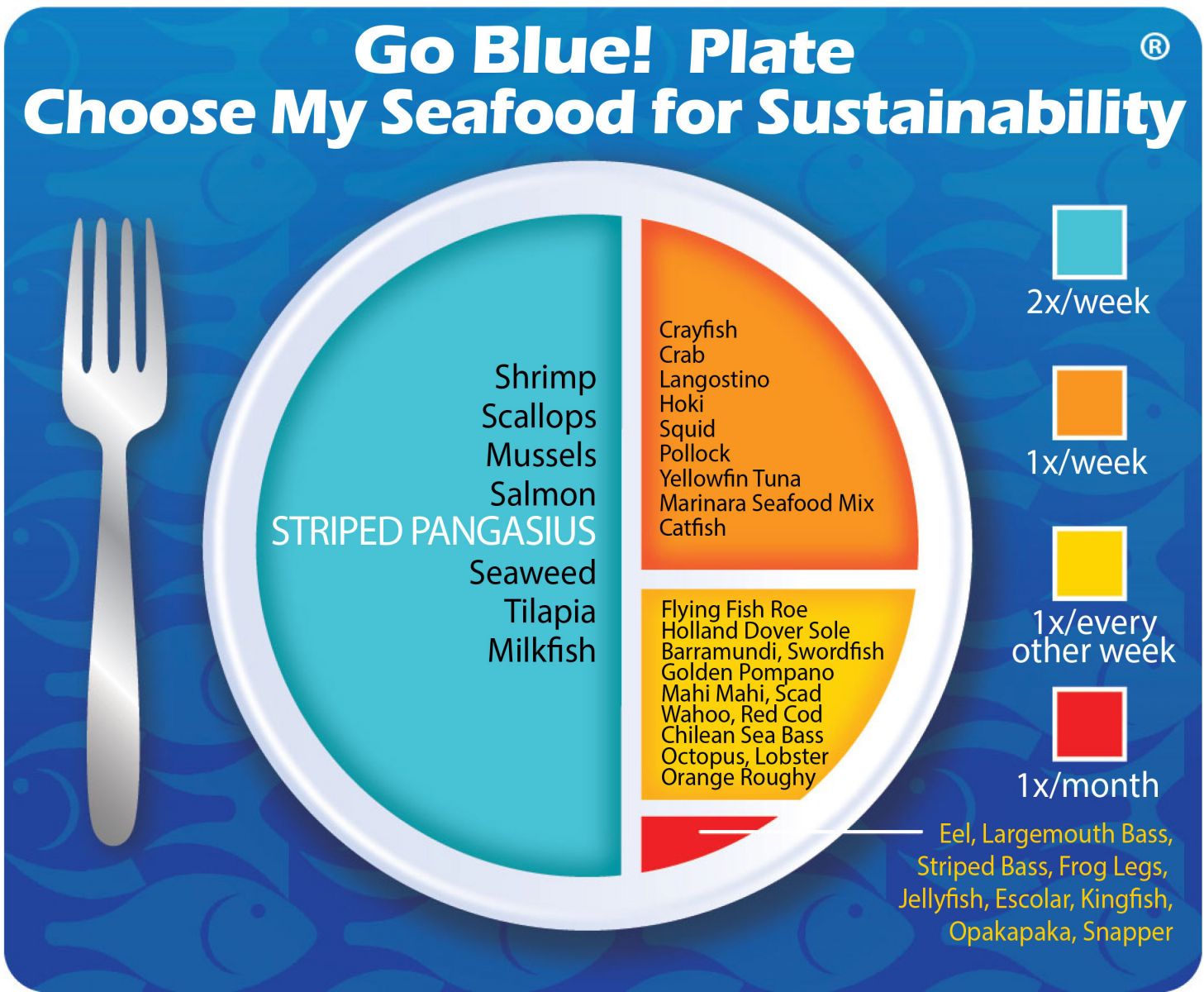
Environmental Impact: ModerateThere are ongoing concerns about adverse environmental impacts, especially localized water pollution from farm effluents.
Sustainability Improvements NeededTo reduce negative environmental impacts, the Pangasius farming industry in Vietnam and worldwide in countries like China and India need to continue their progress toward more sustainable practices by making it more affordable for small family farmers to attain certifications.
Actions that Sea Port is UndertakingStriped Pangasius is the 6th most popular seafood in the U.S. Sea Port imports BAP one Star certified Striped Pangasius from Vietnam. Sea Port is a Governing Member of the Global Aquaculture Alliance which is actively working with many Vietnamese Striped Pangasius farmers to use their Best Aquaculture Practices (BAP) certification guidelines. Sea Port believes that responsible Striped Pangasius aquaculture will continue to expand in Vietnam and around the world. Sea Port also believes that, in aggregate, choosing from a diverse variety of seafood is better for sustaining the world’s seafood resources and Striped Pangasius is an important part of this variety.
We created the sustainability assessments for each of our seafood items in order to reveal the existing and potential environmental impacts and risks that are associated with producing them for human consumption. This allowed us to establish the starting position for each of our seafood items along our progressive Go Blue! Seafood Sustainability Spectrum®. These assessments are only a single snapshot in time and because of this, we will continue to assess and update the critical sustainability needs associated with our supply sources and issue updates to the Go Blue! Seafood Sustainability Spectrum® as needed. There is a growing global awareness for the need to assure the sustainability of farmed and wild caught seafood and because of this; all around the world positive changes are rapidly occurring at all levels of the seafood supply chain. We will continue to spread this growing awareness and work with our many industry partners to improve the sustainability of all seafood, which we believe is the ideal protein of choice to feed an ever growing world population. Our Go Blue! Seafood Sustainability Spectrum® serves as our compass and yardstick as we strive to move all our products forward to becoming more sustainable. Please join us in this committed quest and Catch Our Wave® to sustainability by choosing a diverse variety of responsibly produced seafood as part of your diet.
|

